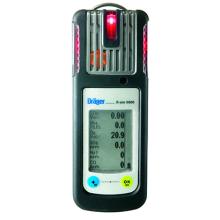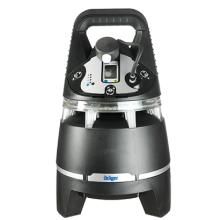Formaldehyde / CH₂O

Gas Identification
Chemical properties
Physical properties
Flammability limit
Threshold limit value
Formaldehyde : Description and use
Methanal or formaldehyde or formic aldehyde is an organic compound of the aldehyde family. It is the simplest member of this family. Synthesised for the first time by the Russian Alexander Butlerov in 1859, it was formally identified by the German August Wilhelm von Hofmann in 1867. Gaseous formaldehyde is not commercially available. Pure formaldehyde, in anhydrous gas form, is difficult to produce and maintain in this state as it tends to polymerise, particularly at low temperatures. Furthermore, this polymerisation is largely accelerated by traces of water, acid or base.
It can be a gas with a characteristic odour or a colourless liquid (solution). At room temperature it is a flammable gas.
Flammability and explosiveness: Formaldehyde is a highly flammable gas. If exposed to a source of ignition or combustion, an explosion may occur if it is present in the air at concentrations of between 7.0 and 73% (vol./vol.).
Formaldehyde is one of the most widely used organic compounds in the chemical industry, partly thanks to its great versatility. Therefore, it is a Volatile Organic Compound (VOC) that is widely used in the workplace. It is used:
- Mainly to manufacture several glues, resins and varnishes used to produce plywood, chipboard or particle board (melamine), furniture and other wooden products.
- As an intermediate in the synthesis of many other products such as: 1,4-butanediol, trimethylolpropane, 2,2-dimethyl-1,3-propanediol and 4,4'-diphenylmethane diisocyanate (MDI), which are in turn used to manufacture polyurethane, polyester-type plastics, synthetic lubrication oil and plasticisers or nitrilotriacetic acid (NTA) and ethylenediaminetetraacetic acid (EDTA), which are complexing agents present in many detergents.
- As part of the preserving agent in thanatopraxy (funeral services: embalming) > as a fixing agent, disinfectant and dehydrating agent for biological tissues (pathology laboratory)
- As a fumigant, i.e. insecticide, germicide, fungicide (agricultural sector: hatchery fumigation) > as a disinfectant, antiseptic and antibacterial additive (pharmaceutical and cosmetic industries)
- For manufacturing cores and moulds (foundry)
- To make crease-free primer and for dyes (textile finishing industry)
- In various other fields and sectors such as the paper industry (resistant to humidity and a laminated surface (glossy paper)), the chemical industry (paint and varnish, photography and printing products), in non-metallic mineral insulators, the food industry (cleaning process for edible food), in electronic components and parts, the leather industry (primer and tanning agent), in the manufacture of plant feed, fertilisers, and explosives.
Formaldehyde : Warnings and caution
H310 - Fatal in contact with skin.
P260 - Do not breathe mist/vapours/spray.
P272 - Contaminated work clothing should not be allowed out of the workplace.
P280 - Wear protective gloves/protective clothing/eye protection/face protection.
P301+P310 - IF SWALLOWED: Immediately call a POISON CENTRE or doctor/physician.
P302+P352 - IF ON SKIN: Wash with plenty of soap and water.
P304+P340 - IF INHALED: Remove victim to fresh air and keep at rest in a position comfortable for breathing.
P305+P351+P338 - IF IN EYES: Rinse cautiously with water for several minutes. Remove contact lenses, if present and easy to do. Continue rinsing.
P309+P311 - IF EXPOSED OR YOU FEEL UNWELL: Call a POISON CENTRE or doctor/physician.
Formaldehyde : Related products
Portable Gas Detectors
Multi-Gas Area Monitors






